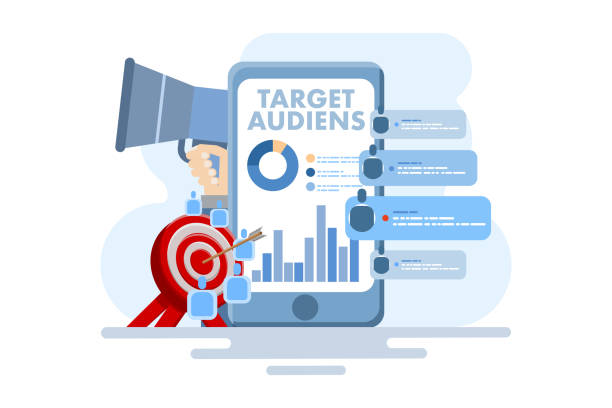
Google Ads is one of the most powerful tools for digital marketing, allowing businesses to reach highly targeted audiences across a range of devices and platforms. However, simply running ads without focusing on the right audience can lead to wasted budgets and missed opportunities. That’s where Google Ads Audience Targeting comes in. By effectively utilizing audience targeting strategies, businesses can optimize their campaigns, increase conversions, and maximize ROI.
In this blog, we will dive deep into various Google Ads Audience Targeting strategies that can help transform your ad performance. From demographic and interest-based targeting to remarketing and custom audiences, we will explore the key methods you can use to connect with the right people at the right time.
What Is Google Ads Audience Targeting?
Google Ads Audience Targeting refers to the ability to define and narrow down who sees your ads based on their behavior, interests, and demographics. It allows advertisers to reach users who are more likely to engage with their brand or take specific actions, such as making a purchase or signing up for a newsletter. By understanding the behavior and preferences of your audience, Google Ads lets you serve more relevant and personalized ads, ultimately boosting performance.

The Google Ads platform offers several targeting options, enabling businesses to tailor their advertising approach in a way that aligns with their goals, whether that’s brand awareness, lead generation, or direct sales. Effective audience targeting is critical because it ensures your ads aren’t being shown to irrelevant users, helping to save budget and increase efficiency.
Why Is Google Ads Audience Targeting Important?
Google Ads Audience Targeting is important because it allows businesses to focus their efforts on the people most likely to be interested in their products or services. By narrowing down your audience, you can create more personalized ads that resonate with potential customers, making them more likely to take the desired action.
Without effective targeting, you may waste money showing your ads to people who are not interested in your offerings, resulting in poor performance and higher costs per click. Proper audience targeting not only maximizes your ad budget but also improves the overall performance of your Google Ads campaigns by enhancing click-through rates (CTR) and conversion rates.
Audience Targeting Strategies: The Key to Success
Audience targeting in Google Ads offers a range of options that can be tailored to your specific goals. Below, we’ll look at the most effective audience targeting strategies that can help you improve the performance of your Google Ads campaigns.
1. Demographic Targeting
Demographic targeting allows you to segment audiences based on attributes like age, gender, parental status, and household income. This strategy is ideal for businesses with offerings tailored to specific groups, such as luxury goods for high-income individuals or toys for parents.
Tips for effective demographic targeting:
- Identify your target audience’s demographics through market research or customer data.
- Use exclusions to avoid spending on groups unlikely to convert.
- Monitor and adjust settings based on campaign performance.
2. Affinity Audiences
Affinity audiences enable advertisers to reach users with specific lifestyles, interests, and habits. These predefined segments are curated by Google and help brands connect with consumers who align with their products or services.
How to utilize affinity audiences:
- Choose audience categories that match your brand’s niche.
- Craft ad creatives that appeal to the interests of the targeted group.
- Track engagement metrics to refine your approach.
3. In-Market Audiences
In-market audiences consist of users actively researching or comparing products and services similar to yours. These users have demonstrated purchase intent, making them valuable prospects for conversion-focused campaigns.
Strategies for in-market targeting:
- Align your campaign with categories relevant to your business.
- Offer promotions or discounts to incentivize quick decision-making.
- Combine in-market audiences with remarketing for increased effectiveness.
4. Life Events Targeting
Life events, such as getting married, graduating, or moving, often coincide with significant purchasing decisions. Google Ads allows you to target users undergoing these milestones, presenting an opportunity to capture their attention during transitional moments.
Best practices for life events targeting:
- Align your ad messaging with the emotions and needs tied to specific life events.
- Offer relevant products or services to meet users’ current demands.
- Regularly review performance data to optimize your campaign.
5. Remarketing and Retargeting
Remarketing is one of the most effective Audience Targeting Strategies to re-engage users who have interacted with your website or app. It keeps your brand top of mind and encourages users to complete their journey.
Key tactics for remarketing campaigns:
- Segment audiences based on their actions, such as cart abandoners or page viewers.
- Personalize ad content to address user behavior.
- Limit ad frequency to avoid overwhelming your audience.
6. Custom Segments
Custom segments (formerly known as custom intent and custom affinity) allow you to define your audience based on specific search keywords, app usage, or website visits. This targeting option is particularly powerful for niche businesses.
How to create effective custom segments:
- Use keywords and URLs relevant to your audience’s interests.
- Continuously refine your segments based on campaign insights.
- Combine custom segments with other targeting options for enhanced precision.
7. Geo-Targeting
Geo-targeting focuses on reaching users in specific locations, making it essential for businesses with geographic priorities. Whether you operate locally or globally, this strategy ensures your ads appear where they’re most effective.
Tips for successful geo-targeting:
- Use location-based performance data to adjust bids.
- Create location-specific ad copy to boost relevance.
- Exclude regions where your offerings are unavailable or less relevant.
8. Lookalike Audiences (Similar Audiences)
Lookalike audiences help you expand your reach by targeting users similar to your existing customers. This strategy is ideal for scaling campaigns while maintaining relevance.
Steps to leverage lookalike audiences:
- Use a high-quality data source, such as a customer list or website visitors.
- Layer lookalike targeting with other audience filters for better accuracy.
- Monitor performance and refine the audience to improve results.
9. Behavioral Targeting
Behavioral targeting focuses on users’ online activity, including browsing habits, past purchases, and engagement with ads. By understanding user behavior, you can deliver highly personalized ads.
Tips for effective behavioral targeting:
- Analyze user behavior to identify patterns and preferences.
- Leverage machine learning to optimize targeting over time.
- Develop dynamic ad creatives that adapt to user actions.
10. Contextual Targeting
Contextual targeting places your ads on websites or pages relevant to specific keywords. This ensures your ads appear in environments aligned with your message.
Best practices for contextual targeting:
- Select keywords that closely relate to your offerings.
- Exclude irrelevant content categories to enhance ad placement.
- Regularly update your keyword list based on campaign performance.
11. Combined Audiences
Google Ads allows you to create combined audiences by layering different targeting criteria, such as demographics, interests, and behaviors. This enables ultra-precise targeting for high-impact campaigns.
How to use combined audiences effectively:
- Identify traits common among your best-performing customers.
- Test different combinations to find the most effective mix.
- Optimize campaigns based on real-time data and insights.
For instance, you could target in-market audiences based on a user’s current buying intent, while also using demographic targeting to refine your audience further by age or household income. Adding remarketing to the mix ensures you re-engage people who have already shown interest in your brand but didn’t complete a conversion. By using a combination of these strategies, you can ensure that your ads are highly relevant and tailored to the most likely prospects.
Measuring and Optimizing Your Audience Targeting Efforts
To get the most out of your Google Ads campaigns, it’s crucial to continuously measure the performance of your audience targeting strategies and optimize your approach. Google Ads provides detailed reports on ad performance, allowing you to track metrics such as click-through rates (CTR), conversion rates, cost-per-click (CPC), and return on ad spend (ROAS).
By regularly analyzing these metrics, you can identify which audience segments are performing best and adjust your targeting accordingly. For example, if certain demographics or in-market segments are driving higher conversions, you can allocate more budget to those segments and refine your targeting further.
A/B testing is also a valuable tool for optimizing audience targeting. You can test different targeting strategies, creative, and messaging to determine what resonates most with your audience. By refining your targeting based on real data, you can continuously improve your Google Ads performance.
Final Thoughts on Google Ads Audience Targeting
Audience targeting is one of the most important aspects of Google Ads that directly impacts the effectiveness of your campaigns. By leveraging demographic targeting, interest-based targeting, in-market audiences, remarketing, custom audiences, and lookalike audiences, you can ensure your ads are reaching the right people at the right time.
The key to success lies in continuous optimization, testing, and refining your approach to audience targeting. By focusing on the right audience segments and tailoring your campaigns accordingly, you can improve ad relevance, boost conversions, and maximize ROI.
Whether you’re new to Google Ads or looking to take your campaigns to the next level, implementing effective audience targeting strategies is essential. At Good On Digital, we specialize in helping businesses develop and implement highly effective Google Ads strategies. Our expert team can guide you through the process of refining your audience targeting and optimizing your campaigns for maximum performance.
Good On Digital, based in Seattle, is here to help you achieve your advertising goals by crafting tailored Google Ads strategies that deliver measurable results. Reach out to us today and let us help you transform your Google Ads performance.


